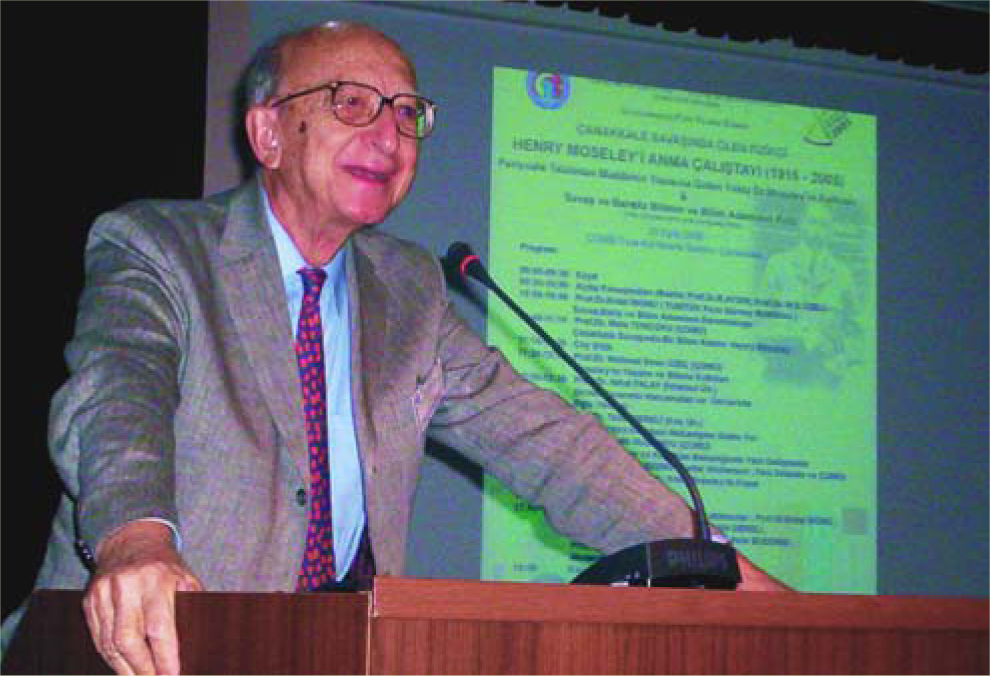Turkey Turns War Death into Peaceful Purpose
DOI: 10.1063/1.2155747
Henry Moseley, the British physicist who died 90 years ago in Turkey, was feted in that country with a World Year of Physics event at Çanakkale Onsekiz Mart University on 29–30 September.
With the outbreak of World War I, Moseley joined the British Army in 1914 at age 26 and was sent to the Dardanelles to fight against Turkey. He fell at Gallipoli on 10 August 1915. Despite his short life, Moseley made lasting contributions to science. He is best known for his studies of x-ray spectra, which led to Moseley’s law and to the arrangement of elements by atomic number rather than by weight in the periodic table.
Moseley is a famous scientist associated with Turkey, says Mehmet E. Özel, the astrophysicist who organized the September meeting. “Of course he is British, but he is lying in our land. We consider him part of our heritage.”
About 100 physicists and students gathered to consider Moseley’s contributions to science, the legacy of the Manchester group where he worked with Ernest Rutherford, the challenges in bringing Turkey’s scientific enterprise to an internationally competitive level, and the roles and responsibilities of science in war and peace.
A few attendees made a pilgrimage to Moseley’s gravesite, which Özel and others pinpointed earlier this year from war records. Still on Özel’s wish list are reviving a proposal to name an element after Moseley and creating an international prize for young scientists in Moseley’s honor. Özel says his hope “is for the war event to become a starting point for closer international cooperation, peace, and scientific development.”

Erdal Inönü, a physicist, science historian, and former deputy prime minister of Turkey, spoke on war, peace, science, and scientists at a meeting honoring Henry Moseley.
MEHMET EMIN ÖZEL AND NURI EMRAHOGLU

More about the Authors
Toni Feder. American Center for Physics, One Physics Ellipse, College Park, Maryland 20740-3842, US . tfeder@aip.org





